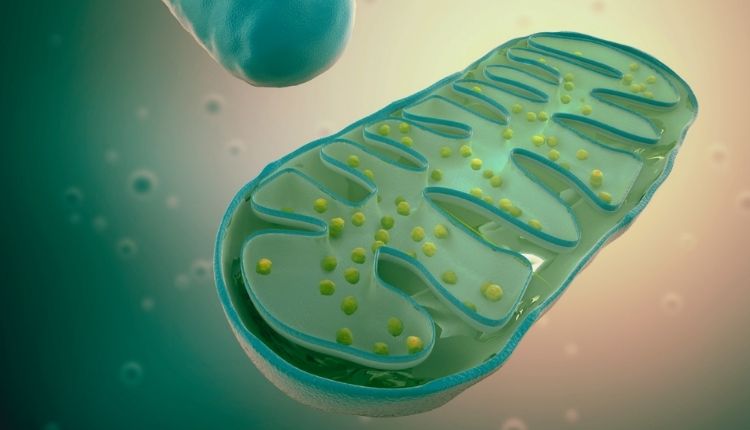WiFi and electric fields are part and parcel of everyday life nowadays, yet people report feeling tired or uncomfortable upon prolonged exposure. Mitochondria, or the powerhouses of the cell, create the energy that renders the body dynamic and balanced. Under the influence of chronic electric signals, certain researchers indicate that such small units are capable of failing at maximum efficiency, leading to tiredness, groggy head, or slow restoration from strain. While more studies are still being conducted, it is, however, quite apparent that the environments of today affect how our bodies feel and perform.
In this article, we will look at what mitochondria are, how electronic fields work on the body, the impact on everyday energy, cellular stress indications, and easy steps toward healthier living. It is not about staying away from technology altogether, but rather, about realizing how balance can alleviate WiFi fatigue and safeguard long-term health.
What Mitochondria Do
Mitochondria are tiny structures inside every cell that act like miniature power stations. Their main job is to produce energy in the form of a molecule called ATP, which fuels everything the body does. From moving muscles to keeping the heart beating and the brain thinking, mitochondria make it all possible. They also help regulate cell health by controlling signals for repair, growth, and even defense against stress. When mitochondria are strong, the body feels energized, focused, and resilient. But when they are under strain, people often notice low energy, brain fog, or slower recovery from daily activities. In modern life, constant exposure to screens, stress, and electronic fields may add extra pressure to these energy-makers. This does not mean mitochondria stop working, but they may not perform as efficiently as they could. Understanding their role is important because protecting mitochondrial health is one of the best ways to maintain steady energy and long-term well-being.
How Electronic Fields Work
Electronic fields are invisible waves that come from WiFi, phones, and other wireless devices. These signals surround us almost everywhere, and while convenient, they may add stress to the body’s natural systems. The concern is not about removing technology but about finding balance. Simple strategies can reduce potential strain:
- Limiting screen time before bed for deeper rest
- Placing routers away from sleeping areas
- Taking regular breaks from wireless devices
- Spending more time outdoors in natural light
- Supporting energy through proper sleep and nutrition
At Legacy Healing Center, experts often highlight lifestyle balance as a key to lowering stress and protecting cellular health. By combining mindful technology use with healthier daily routines, it is possible to reduce WiFi fatigue. The goal is not fear, but awareness—understanding that even small adjustments can help the body feel more energized and resilient.
Impact on Energy Levels
The following are general inquiries individuals make regarding WiFi fatigue and how it relates to energy level. These responses include uncomplicated advice and uncomplicated information.
What is WiFi fatigue?
WiFi tiredness or WiFi fatigue are feelings of tiredness, lack of concentration, or restlessness reported by some people after long exposure to wireless devices and electromagnetic fields. While researchers are working on it, many believe that it has something to do with the body’s energy systems.
How do electric fields affect mitochondria?
Mitochondria produce energy within the body, and prolonged stimulation of digital environments can stimulate more stress signals. This renders cells more inefficient at generating constant energy, influencing feelings of fatigue or brain fog.
Can WiFi exposure reduction improve sleep?
Indeed, restricting device use prior to sleeping and relocating routers from sleeping areas can encourage deeper, more restorative sleep. This allows mitochondria the opportunity to recover and replenish.
What are easy ways to reduce WiFi fatigue?
Getting away from screen time, spending time outside, and practicing healthy sleep patterns all aid natural energy and relieve strain.
Signs of Cellular Stress
When energy feels low and focus is hard to maintain, simple habits can make a big difference. Supporting mitochondria helps restore balance and reduces WiFi fatigue. Below are easy, actionable tips to try.
- Take short breaks from devices every hour
- Keep phones and tablets out of the bedroom at night
- Use natural daylight to reset the body’s rhythm
- Add antioxidant-rich foods to support cell repair
- Practice deep breathing to calm stress responses
These small steps help protect cellular energy and keep the body resilient. By making them part of a daily routine, you can reduce fatigue and feel more alert, even in a digital environment.
Protecting Mitochondrial Health
One true example illustrates how little alterations can create significant outcomes. A software engineer used to work late evenings among devices, and the router sat right beside the workdesk. He experienced chronic tiredness, poor concentration, and disturbed sleeping patterns. Initially, he blamed workload, but later experimented with changing digital habits. He situated the router in another room, cut down on phone use prior to sleeping, and incorporated walks outdoors every day. In weeks, they said they had more energy, clearer minds, and improved sleeping patterns. Little alterations had been made, but the effects were obvious.
68 percent of people say they feel more energized when reducing late-night screen use
Specialists clarify that mitochondria protection doesn’t mean staying away from tech, but achieving equilibrium. Healthy eating, frequent movement, and conscious tech use all cut down on unnecessary strain. Used together, the body’s intrinsic energy systems are able to recover and work more effectively. That instills confidence that practical changes are able to alleviate WiFi fatigue without extreme actions.
This bite-size case study illustrates that mitochondria protection stems from the everyday steps anyone can do. It is not difficult to restore balance, it is consistency and awareness. When lifestyle habits are altered, energy heals naturally.
Building a Balanced Lifestyle
WiFi fatigue is part of modern living, but it does not need to define how you feel. By supporting mitochondria through mindful habits and reducing electronic strain, you give your body the chance to recharge. The path to balance is simple: small steps add up to big improvements. Protecting mitochondrial health helps reduce WiFi fatigue and strengthens long-term well-being. Start today with one change and feel the difference in your daily energy.






